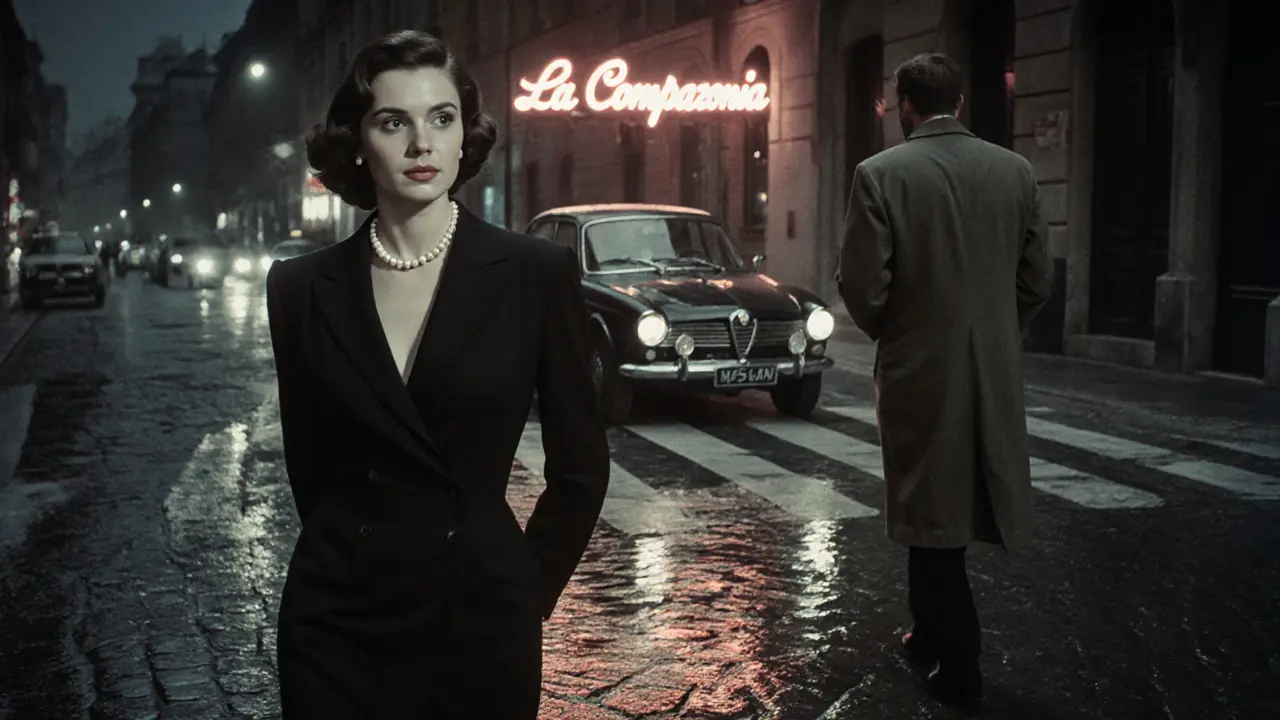Before you picture modern-day escort services in Milan, think back to the 1500s. Back then, women known as courtesans weren’t just companions-they were educated, influential, and often more powerful than noblewomen. In Renaissance Milan, these women moved in the same circles as artists, poets, and dukes. They spoke multiple languages, played music, and debated philosophy. Their value wasn’t in sex alone-it was in their ability to make a man look smart, cultured, and well-connected. This was the original escort scene: polished, private, and deeply tied to status.
The Rise of the Courtesan Class
During the 16th century, Milan was a center of art and politics under the Sforza and later Spanish rule. Wealthy men didn’t just want company-they wanted prestige. Courtesans like Veronica Franco in Venice had their counterparts in Milan: women who lived in elegant homes near the Duomo, hosted salons, and collected patronage from bishops and bankers. Some even owned property. Their contracts weren’t written in blood, but in gold. A typical arrangement included monthly payments, jewelry, and sometimes a pension. These weren’t street workers. They were businesswomen operating in a gray zone between legality and social taboo.
Church records from the 1580s show that Milan’s archdiocese tried to ban courtesans from attending Mass. But they kept coming. Why? Because the elite needed them. A duke couldn’t host a dinner without a witty companion. A merchant couldn’t network without a woman who knew how to flirt with the right people. The system worked because it was silent, efficient, and deeply embedded in the city’s social fabric.
From Nobility to the Streets
The French occupation in the early 1800s changed everything. Napoleon’s reforms dismantled old aristocratic structures. Courtesans lost their patrons. Many moved into brothels or became street-based sex workers. The distinction between high-class companions and paid companionship blurred. By the 1860s, after Italy’s unification, Milan’s city council passed laws regulating prostitution. Women had to register, undergo medical checks, and wear identifying badges. It was meant to control disease and public decency-but it also made the trade visible. For the first time, escorting became something the city officially acknowledged, even if it didn’t approve.
During World War II, the city’s nightlife exploded. American and Allied soldiers flooded Milan’s bars and clubs. Local women found new opportunities. Some worked in cafés that doubled as meeting spots. Others were introduced through networks that had existed for centuries. The term “escort” started appearing in police reports-not as a noble title, but as a euphemism. It was cleaner than “prostitute.” More respectable. And it stuck.
The Post-War Shift: Glamour Meets Grit
After the war, Milan became Italy’s fashion capital. The city’s image transformed from war-torn to glamorous. And so did its escort scene. In the 1950s and 60s, escort agencies began appearing in the Brera district and near Piazza San Babila. These weren’t sleazy operations-they advertised in fashion magazines, used discreet phone lines, and required clients to dress well. Women were often models, actresses, or students. They didn’t call themselves prostitutes. They called themselves “companions.”
One agency, La Compagnia, operated from a townhouse on Via Manzoni in the 1970s. It didn’t list prices publicly. Clients were vetted. References were required. The women were paid by the hour, but many built long-term relationships with repeat clients. Some even moved abroad with them. This was escorting as a lifestyle choice-not desperation. It was the era of La Dolce Vita, and Milan was its Italian heartbeat.

The Digital Turn: Apps, Ads, and Anonymity
The 2000s brought the internet. By 2010, escort listings had moved from classified ads in Corriere della Sera to private websites and forums. Sites like MilanEscortDirectory.com and PrivateGentleman.it popped up. They offered profiles, photos, and availability calendars. No phone calls. No meetings in dark alleys. Everything was scheduled online. The women were more professional than ever. Many had university degrees. Some spoke fluent English, German, or Mandarin. They catered to business travelers from Zurich, Dubai, and Tokyo.
By 2018, apps like OnlyFans and Seeking Arrangement started replacing traditional agencies. Women could set their own rates, choose their clients, and work from home. The old model-the agency taking 40%-died off. Now, a woman in Milan could earn €150-€500 an hour without ever stepping into a hotel lobby. The stigma didn’t vanish, but it softened. More people saw escorting as a form of freelance work.
Legal Reality: What’s Allowed Today
Italy doesn’t ban prostitution itself. But it bans brothels, pimping, and advertising. That means escorting exists in a legal gray zone. In Milan, you can legally meet someone for dinner and then pay for their company. You can’t legally book a service through a website that says “sexual services available.” The law is clear: if money is exchanged for sex, it’s illegal. But if it’s exchanged for “companionship,” it’s not.
This loophole keeps the industry alive. Most modern escorts in Milan avoid direct sexual offers in ads. They use phrases like “discreet company,” “evening arrangements,” or “personalized experience.” Clients understand the code. Police rarely intervene unless there’s public disorder or underage involvement. The city’s approach? Ignore it unless it becomes a problem.

Who Uses These Services Today?
It’s not just wealthy businessmen. In 2023, a local university study found that 37% of clients in Milan were between 25 and 35. Many were tech workers, designers, or freelancers. They weren’t looking for romance. They were looking for connection without commitment. One respondent said, “I don’t want a girlfriend. I want someone who listens, doesn’t judge, and knows how to make a good espresso.”
Foreign tourists still come-especially from Germany, the UK, and Scandinavia. But now, many are repeat visitors. They have favorite escorts they return to every year. Some have been seeing the same woman for over a decade. It’s not transactional. It’s relational.
Why Milan? Why Now?
Milan has always been a city of contrasts. It’s where fashion meets finance, tradition meets innovation. That tension shapes its escort history. Unlike Rome, where the Church held tight control, or Naples, where organized crime dominated, Milan’s approach was pragmatic. It let the trade evolve quietly. No crackdowns. No moral panic. Just adaptation.
Today, escorting in Milan is less about secrecy and more about control. Women set boundaries. They choose clients. They use encrypted apps. They have lawyers. They pay taxes. The old image of the desperate woman has been replaced by the confident professional. And the city? It doesn’t talk about it. But it doesn’t stop it either.
The Future: Discretion as a Service
The next decade will bring more tech. AI chatbots might screen clients. Biometric verification could replace ID checks. Some agencies are already testing voice-only booking systems to avoid digital trails. But the core hasn’t changed. People still want company. They still want to be seen. They still want to feel understood.
Milan’s escort history isn’t about sex. It’s about human need. The need to be listened to. To be admired. To be free from judgment. That hasn’t changed since the Renaissance. And it won’t change tomorrow.
Is escorting legal in Milan?
In Milan, prostitution itself isn’t illegal, but advertising, brothels, and pimping are. Escorting exists in a legal gray area: paying for companionship is allowed, but paying for sex is not. Most modern escorts avoid explicit sexual offers in ads and instead use terms like "discreet company" or "personalized evening." The city rarely enforces laws unless there’s public disturbance or underage involvement.
How do escorts in Milan find clients today?
Most use private websites, encrypted messaging apps, or platforms like OnlyFans and Seeking Arrangement. Traditional agencies have largely disappeared. Women now manage their own bookings, set their own rates, and vet clients through references or video calls. Many avoid public listings entirely, relying on word-of-mouth or invite-only networks to maintain privacy and safety.
Are escort services in Milan only for wealthy clients?
No. While high-end services still exist, the majority of clients today are professionals between 25 and 40-tech workers, designers, and freelancers. Many are locals who value discretion and emotional connection over luxury. Prices range from €100 to €500 per hour, depending on experience and services offered. The market has diversified beyond the wealthy elite.
What’s the difference between a courtesan and a modern escort in Milan?
Courtesans in the Renaissance were highly educated, socially connected women who advised nobles, hosted salons, and influenced politics. Their role was cultural as much as personal. Modern escorts focus on companionship, emotional support, and discretion. While some still offer intellectual engagement, the role is more transactional and less tied to aristocratic circles. The shift reflects broader changes in gender roles and social structures.
Why hasn’t Milan cracked down on escorting like other Italian cities?
Milan has always taken a pragmatic approach. Unlike Rome, where the Vatican exerts strong influence, or Naples, where organized crime controls vice, Milan’s priorities are business, fashion, and tourism. The city tolerates discreet, non-disruptive services because they don’t interfere with its global image. Enforcement is minimal unless there’s public outcry or underage activity. It’s a silent agreement: stay low-key, and you’ll be left alone.



